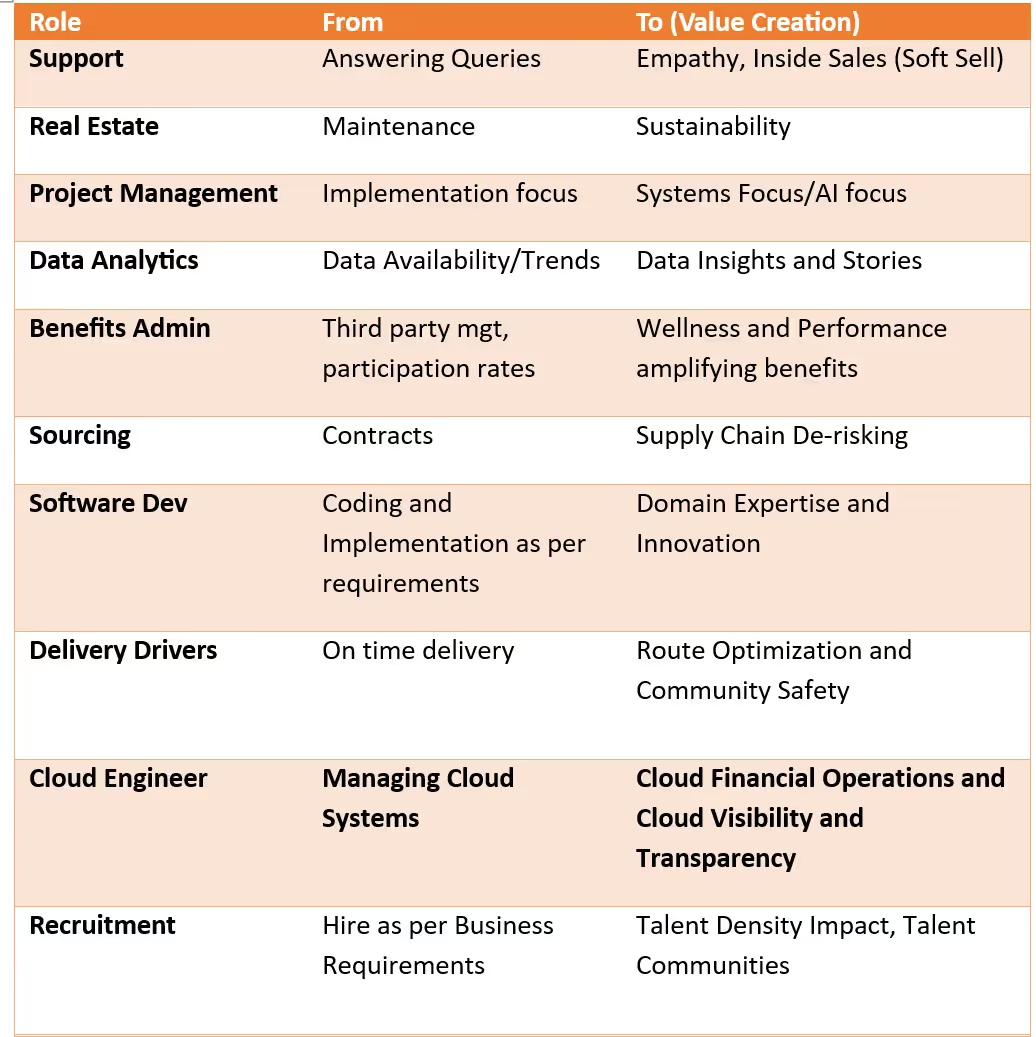Enhancing Job Value in the AI Era: Insights from Draup
We’re gearing up to release a new paper just before the holiday season, focusing on using value-creation frameworks to enhance existing jobs. These frameworks, which you may know from Michael E. Porter of Harvard Business School, are quite influential. Contributions from C.K. Prahalad and V. Ramaswamy, particularly on how value is co-created with consumers, are also significant. Our Draup paper aims to adapt current job roles to tackle better the challenges posed by AI, automation, and other industry disruptions. During our study, we found a thought-provoking dissertation by Justin Bloesch titled “Essays in Labor Economics and Macroeconomics,” completed at the Harvard University Graduate School of Arts and Sciences in 2022.
One simple yet intriguing idea from this paper involves a small restaurant. Let’s think about a simple restaurant with only a cook and a waiter; the owner doesn’t work. The way this restaurant works is like a team: if either the cook or the waiter doesn’t do their job, the restaurant can’t sell anything. Imagine that training a new cook takes more time than training a waiter because even an experienced cook needs to learn the new menu. In this situation, the cook is more important because it’s harder to replace them, but the waiter isn’t as crucial and can be replaced more easily. If the restaurant starts doing really well and makes more money, the owner might have to pay the cook more to keep them happy. This is because the cook can demand a higher salary due to their unique skills.
The waiter, however, will probably get the normal wage for waiters. This example is just about a small restaurant. Still, it helps us understand how this works in bigger companies with many different jobs and where more workers mean less extra benefit from each additional worker. This scenario, though simple, helps us understand similar dynamics in larger organizations with diverse roles. In scientific terms, this is a Leontief function, named after economist Dr. Wassily Leontief, where both roles are critical, yet some may have greater wage growth potential.
So, what can a waiter do in such a scenario? To enhance their role, a waiter could develop various customer engagement strategies to ensure that customers remember their experience and the food. This might include personal touches like greeting repeat customers by name, remembering their taste preferences, or describing the food artistically and engagingly. These strategies could add unique value to their role, making it more integral to the restaurant’s success.
We’re currently working on creating a comprehensive table designed to enhance value generation within each job category. This blueprint will be an invaluable tool for HR leaders across various enterprises, providing them with a structured approach to optimize and elevate the roles within their organizations. This table will not only identify key areas for improvement but also suggest actionable strategies tailored to each job family. By doing so, it aims to facilitate better performance, employee engagement, and overall productivity.
Below is an example of what this table might look like, illustrating how it categorizes different job families and outlines specific methods for value enhancement in each. By adopting this approach, HR has the potential to significantly influence both cost-efficiency (the bottom line) and revenue growth (the top line) of the organization.

Overall, we are pretty excited about HR’s role under emerging circumstances. If we plan the initiatives correctly, we can accelerate transformation and adaptation and make the enterprises genuinely care for a great workplace.










.svg)




















.svg)





.svg)
